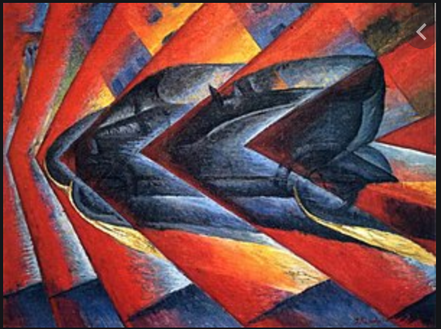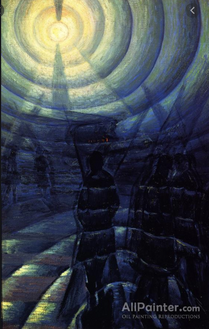Grade 7 Studio Art
Are Jackalopes Real?
‘Ye Olde Curiosity Shop’ Dare to look inside!
Curiosity shops or Curio shops ~ are shops that satisfy your curiosity with strange and unusual things!
In this unit we will create the fantastical, inspired by some very real and pressing reasons for doing so.

Key Concept: INNOVATION
RELATED CONCEPT: INTERPRETATION
GLOBAL CONTEXT: GLOBALIZATION & SUSTAINABILITY
Statement of Inquiry: Our planet's animals are negatively impacted by the over-population of humans, and industry growth.
Creating innovative hybrids of animals (or mutant interpretations that confront the viewer), helps bring awareness to an audience that we have to conserve and sustain our natural wildlife, when living in an ever-developing, global world.
INQUIRY QUESTIONS
Factual - What are some of the negative effects humans have on the natural environment? What are some ways this affects our animal life? Can/do animals adapt to suit their environment?
Conceptual— What is important for me to understand here? Why are we engaged in this inquiry?
Debatable—Should we expect animals to adapt to new environments imposed on them by us or should we adapt our practices? Are codes and conventions important to follow?

Your Process Journal and Creative Output Tasks
Task 1. Knowledge & understanding - research -
Brainstorm three things...
1. Ways in which the environment is negatively impacted by humans
2. The impact this has on animals
3. Creative ways animals might be able to adapt, to survive environmental pollution and destruction
Brainstorm in the following way... by either writing a few sentences (min. 6) per. category or, by drawing a mind-map with keywords etc.
Task 2. Knowledge & understanding - research -
Choose one animal that is in peril in some way due to their natural environment being threatened. Write a paragraph (min. 8 sentences) about your chosen animal, addressing the following points...
- your animal's ideal healthy environment
- what they eat, how long they typically live
- what challenges they are currently facing due to pollution & environmental destruction.
Task 3. Developing skills - drawing -
Find a realistic photographic image of your animal online, preferably one that is black and white as this will show you the best ‘values.’ Save the image so that you can refer back to it easily, or even better print it out and bring it into class with you. Make a drawing that is as realistic as possible. Use a variety of pencils, beginning with light sketching with an HB. Build-up the values in your drawing (remember your prior knowledge from your ‘Steampunk bug unit’). Add texture to your animal with mark-making. Your animal should fit nicely within the page, not too big, not to small, get this right by making initial guidelines.
Task 4. Thinking creatively - drawing thumbnails -
Brainstorm (by drawing some rough thumbnails / tiny drawings), imaginative ways your animal could either...
- evolve as a species to survive pollution & environmental destruction. Take one feature from another animal and merge it with your chosen animal to benefit it in some way. Think ‘animal hybrid’. (Get creative here)!
Or,
- mutate in a negative way due to the pollution impact on the animal.
Just let your imagination go wild, these are quick drawings to get your ideas out.
Task 5. Thinking Creatively - development sketches -
Take your best idea and refine it through some slightly larger thumbnails. Maybe you are only focusing on developing one or two additions to your animal, sometimes less is better. Play with the scale of the additions, what do they look like tiny or huge?
Task 6. Developing skills - drawing -
This is your final drawing, use the same approach as in Task 3, but this time you are drawing the modified version of your animal.
Task 7. Responding - assessment tasks / reflection -
You will use a rubric to self-assess your drawing, you will also peer-assess.
Please write an artist statement (min. 6 sentences) explaining why you chose to evolve your animal in this way, explain to an audience what the meaning behind it is.
"In this illustration, I drew an African Elephant hybrid. I wanted to show how humans have majorly messed up the environment and wildlife. I made an elephant with super long legs to escape poachers because poachers are destroying the African Elephant species. I also drew wings on the Elephant so that it can escape the poachers and fly to places with more food, water, and an all-around better living environment. I also drew bulletproof armor on the Elephant so a poacher can’t kill an elephant with a gun, therefore fewer Elephant will die. Finally, I chose to draw the African Elephant because I wanted to show people some of the modifications an Elephant would have to make in order to survive this world with all of the pollution and no regard for animal life."

Futurism & Movement
Unit
Focus: Gesture drawing
Artist Role-models:
Italian Futurists &
Marcel Duchamp
In this unit, students explore the human form and movement as a starting point for their work. They develop their drawing skills in a range of media by selecting and abstracting qualities of the human form through a range of experimental techniques and exercises to use as the basis for their artwork. They learn about the ideas and approaches of other artists and their influences and make connections with the way they recreate movement in the drawing and painting process.
Students will:
• Investigate Futurism and the notion of describing movement and energy
• Further develop their understanding of how to use a range of media such as oil pastels, watercolor, gouache, and pencil; with the intention of enhancing confidence and improving skills.
• Develop an awareness of shape and form.
• Develop observation, construction, and rendering skills.
Inquiry Questions
Factual - How has technology been used in art over the past 150 years?
Conceptual - In what ways can science and technology benefit the arts?
Debatable - Could technology in art go too far so that it stops becoming art and becomes engineering? How do we know that difference?
Key Concept: CHANGE
Related Concepts: NARRATIVE / COMPOSITION
Global Context: Scientific and technical innovation
Statement of Inquiry
Developments in technology can manipulate artists' compositions and create new narratives.
Vocabulary relating to:
Futurism, (eg. Dynamism, movement, speed, motion, continuous, overlapping, transparent, continuity, fade, etc.)
Rendering, (eg. hatching, cross‐hatching, scribble, masking, etc.)
Painting, (eg. Flood, fill, bleed, wet in wet, dry in wet, etc.)
Life drawing, (eg. Proportion, mannequin, measuring, pose, gestural, etc.)
Construction, (eg. Form, joining, paper mache, etc.)
The Manifesto of Futurism, written by the Italian poet Filippo Tommaso Marinetti, initiated an artistic philosophy, Futurism, that was a rejection of the past, and a celebration of speed, machinery, violence, youth, and industry; it was also an advocation of the modernization and cultural rejuvenation of Italy.
Legacy and Influences
Futurism has influenced many succeeding art movements in the 20th century. Art Deco, Dada, Constructivism, Vorticism, Cubism, and Surrealism are among the ones that are closely associated with it. Eventually, Futurism also evolved into Neo-Futurism, an art movement that is driven by modern technology.
Famous Artworks
An art gallery featuring interesting Futurism artworks will most likely seem to glorify the day’s new technologies. This is why the common subject is oftentimes automobiles. And such a collection is clearly in pure contrast with the cultural traditions preserved by a number of museums and art galleries. Even so, there are hundreds of very notable Futurism artworks on display in art galleries all over the world, made by modern artists. Some of the famous examples of Futurism artworks are Giacomo Balla’s ‘Abstract Speed + Sound’ (1913), Umberto Boccioni’s ‘The City Rises’ (1910), and Natalia Goncharova’s ‘Cyclist’ (1913).
Famous Artists
The chief modern artists of futurism include Umberto Boccioni, Giacomo Balla, Gino Severini, Carlo Carra, and Luigi Russolo. However, even famed artists like Pablo Picasso and Christopher R.W. Nevinson has artworks that are closely identified with the artistic elements of Futurism. Many art galleries take pride in featuring Futurism artists, which list also includes Italian artist Anton Giulio Bragaglia, Russian painter David Burliuk, Bulgarian designer Nikolay Diulgheroff, Turkish poet Nazim Hikmet, and Portuguese novelist Almada Negreiros, among others.

'Marchel Duchamp' and his painting 'Nude Descending a Staircase, no.2.'
Task:
In your process journal, create an investigation page into this artwork.
Have a go at drawing the artwork, then answer the following questions next to, or around the artwork, but on the same page.
1. Provide the main details of the artwork
Title
Artist
Date
Medium
Size
2. Describe what you see in the artwork. Make a list of all of the objects and things you can see.
3. How do you think the artwork was made? What techniques and skills has the artist used to make this artwork?
a) What equipment and materials have been used? (e.g. clay, pottery wheel, oil paint, acrylic paint, canvas, paper, small thin brushes, ink, printing press).
b) What techniques has the artist used? (e.g. mono printing, wheel throwing, applied the paint with small, detailed brush strokes).
c) What steps might the artist have taken in making the artwork? (e.g. went outside into the landscape and painted the image directly from nature).
4. How has the artwork been arranged or designed?
a) How has color been used? List the colors.
b) How has the artist used composition in the artwork? (Is it balanced, pleasing to the eye, organized. Use your art elements and principles of design vocabulary).
5. What do you think the artwork is about / emphasizes? How is this related to Futurism?
Arcimboldo
UNIT
Who Am I ?
The Portraiture of Arcimboldo

A unit on IDENTITY
Key concept: Narrative
Related concepts: Interpretation, Visual Culture
Global context: Personal & Cultural Expression
Statement of Inquiry: Within our own personal backgrounds lie interesting stories. Such stories can be interpreted and told with the use of cultural symbols, which help us express who we are.
Inquiry Questions:
Factual— What are the top symbols, motifs, and stories which you feel connected with?
Conceptual— What ways can we express our personal stories, alone, or combined with others?
Debatable — Do these need to come from your country of birth, or your parent's country of birth?
In this unit, you will look at the portraiture of Arcimboldo, and then study your own identity as a starting point for your work. You will develop image selection skills; understand how to construct silhouettes and juxtapose imagery. You will learn about the ideas and approaches of other artists, and make connections with the way they create artwork around this idea of 'identity'.
Task 1: Research page: (Knowledge & Understanding Criterion).
Arcimboldo
Who was he?
When did he live, and what movement of Art was he attached to?
Why did he paint these portraits in such a way, using objects to make up the face?
What was he trying to say (express) about his subjects?
What media did he use to paint?
Answer these questions above and note down any other points of interest about this artist.
Research, save, and print 4 of his portraits, noting down the title, size, and media (what it's painted in).
Create a research page with this information. Think about Layout / Typography – the visual elements that make your work look strong.
Task 2: Create a brainstorming page about what makes you who you are. Look at the culture, nationality, likes, dislikes, family, favorite things, etc. Collect imagery associated with your brainstorm.












